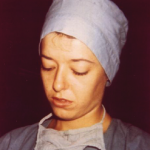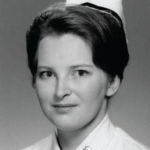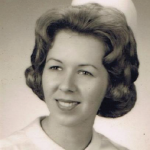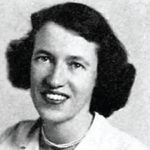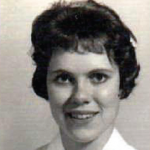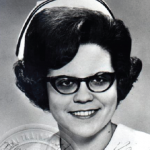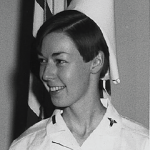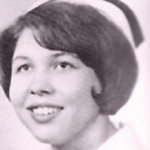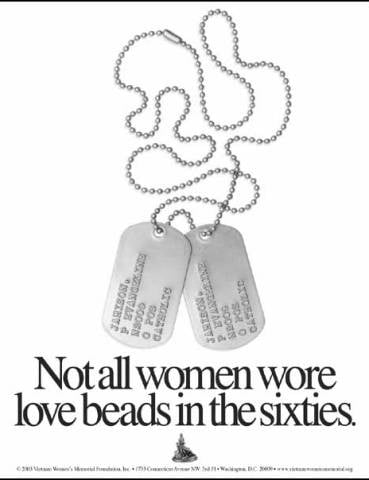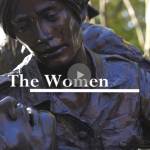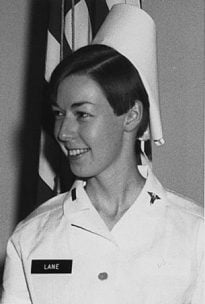
Sharon Ann Lane was born 7 July 1943 in Zanesville, Ohio. Two years later the Lane family moved to Canton, where Sharon spent the remainder of her childhood. She graduated from Canton South High School in June 1961 and decided to pursue her dream of becoming a nurse by attending the Aultman Hospital School of Nursing. She graduated on 25 April 1965 and worked at a local hospital for two years before trying her hand in the business world. She made it through three quarters at the Canton Business College before deciding to join the U.S. Army Nurse Corps Reserve on 18 April 1968.
Training began on 5 May 1968 at Fort Sam Houston, Texas. She graduated on 14 June 1968, and just three days later reported for duty at the Army’s Fitzsimons General Hospital in Denver, Colorado. Her first assignment was with three tuberculosis wards, but after receiving a promotion to first lieutenant, she was placed in the Cardiac Division’s Intensive Care Unit and Recovery Room. She worked in the ICU until 24 April 1969, when she reported to Travis Air Force Base, California, with orders sending her to Vietnam.
1LT Lane arrived at the 312th Evacuation Hospital at Chu Lai on 29 April. She was originally assigned to the Intensive Care Unit, but a few days later was reassigned to the Vietnamese Ward.
Nursing the Vietnamese in Ward 4 was often physically and emotionally challenging, yet Lane repeatedly declined transfers to another ward. She worked five days a week, twelve hours a day in Ward 4, and spent her off-duty time taking care of the most critically injured American soldiers in the Surgical ICU. She thrived despite the demanding schedule, and was adored and respected by co-workers and patients alike.
On the morning of 8 June 1969, the 312th Evacuation Hospital was struck by a salvo of 122mm rockets fired by the Viet Cong. One rocket struck between Wards 4A and 4B, killing two people and wounding another twenty-seven. Among the dead was 1LT Lane, who died instantly of fragmentation wounds to the chest. She was one month shy of her twenty-sixth birthday.
Though one of eight American military nurses who died while serving in Vietnam, Sharon Lane was the only American nurse killed as a direct result of hostile fire. A memorial service was held in Chu Lai 10 June 1969 and a Catholic mass followed the next day. Lane was buried with full military honors at Sunset Hills Burial Park in her hometown of Canton, Ohio.
For her service in Vietnam, 1LT Sharon Ann Lane was awarded the Purple Heart, the Bronze Star with “V” device, the National Defense Service Medal, the Vietnam Service Medal, the National Order of Vietnam Medal, and the Vietnamese Gallantry Cross (with Palm).
In the years that followed her death, various individuals and organizations honored Lane in a variety of ways. On 11 November 1969, the Fitzsimons Hospital named its recovery room the Lane Recovery Suite and put a plaque and a picture on display. In that same year, the Daughters of the American Revolution named her Outstanding Nurse of the Year, and posthumously awarded her the Anita Newcomb McGee medal in 1970. In 1973 a statue of Lane was dedicated in front of Aultman Hospital, and in 1986, the Hospital opened the Sharon Lane Woman’s Center in its front lobby. The Canton Chapter of the Vietnam Veterans of America officially changed its name to the Sharon Lane Chapter #199, and roads in Denver, Colorado, and at Fort Belvoir, Virginia, have been named in her honor. Despite the fact that over thirty years have passed since her death, 1LT Sharon Ann Lane remains an important symbol representing the sacrifices and service of the thousands of American women who served in the Vietnam War.
Sharon’s name is remembered on Panel 23W, Line 112 of The Wall.


Information courtesy of the Army History Center


